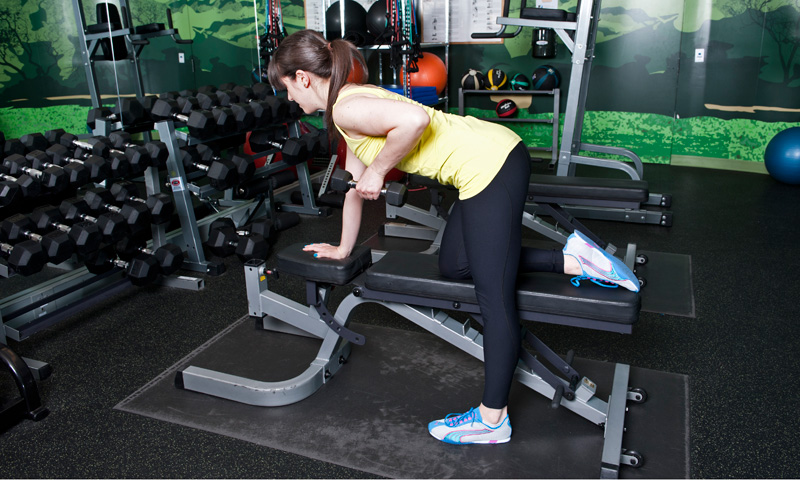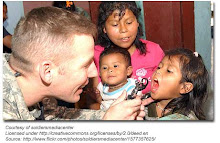A couple of years ago, when my daughter Sammy was 9, some health issues she'd had pretty much since birth -- asthma and eczema -- suddenly became a whole lot worse. Her breathing tests showed reduced lung function and her entire body was itchy, red and dry. Sammy was also having terrible G.I. troubles. We met with various specialists, but nothing seemed to help. Then I began to wonder: Was this a new food allergy? Sammy had long been diagnosed with various food allergies -- the most severe of them being to nuts. (And as if her diet wasn't already limited, she was an extremely picky eater, as well. She was my inspiration for The Sneaky Chef cookbook series!) Eventually, we ended up back in the allergist's office -- and learned that she had developed an allergy to wheat, barley and rye (the gluten-containing grains). If she went off gluten, her doctor said, Sammy's problems should clear up.
Yeah. Not an easy prospect. Sammy is my "carbotarian." Like most kids, she loves pizza, pasta, grilled cheese sandwiches and birthday cake. So as soon as the words came out of the doctor's mouth, I quickly blurted, "Don't worry, baby -- if you can't have it, I won't either!" I felt badly for her. And I didn't want to be chowing down crusty bagels and pizza slices in her face -- somehow it seemed mean, especially since her sister, Emily, has no food allergies and doesn't share my guilt. She'll happily munch a bowl of pasta or a blueberry muffin in front of her sister. So that was it: I would join Sammy in gluten-free solidarity -- besides, maybe I'd drop a few pounds too.
I researched all the foods containing gluten -- the obvious ones, as well as the not-so obvious foods, (see hidden sources of gluten) like soy sauce and certain deli meats, and eliminated them out of our diets. I hunted down gluten-free substitutes for our favorite foods -- and, as you may know, there are tons. With all the hype the diet has received recently -- and all the companies cranking out new products to meet the demand -- it's a pretty good time to be diagnosed with a gluten allergy or sensitivity. (Check here for symptoms to see if you may have a gluten intolerance or sensitivity.)
Sammy and I taste-tested and discovered our favorite gluten-free pastas, pizza crusts, cookies and breads and just swapped them in -- so essentially we were eating the same types of foods and in the same quantities as we had been with the "regular" stuff. After a few weeks on the gluten-free diet, Sammy's eczema cleared up and her breathing tests and gastro issues improved. The unusual puffiness she'd had in her face went down -- Sammy looked like her adorable old self again. She seemed pretty content to live the gluten-free life. The biggest challenge for her was birthday parties, when she'd have to bring her own cupcake. I can't tell you how relieved I was for Sammy.
I, however, didn't have the same happy side effect. I'm not allergic to gluten, so I didn't expect that removing it from my diet would really do anything for me, except maybe help me drop a few pounds. But it did just the opposite; it made the scale needle start creeping up higher than usual. Some people diagnosed with celiac disease gain weight when they remove the offending gluten, simply because their bodies start absorbing nutrients properly -- but that wasn't the case with my own weight gain.
That's when I started really studying the ingredients and nutrition facts and comparing gluten-free products to their regular counterparts. Almost always, the gluten-free versions were considerably lower in fiber and nutrients in general, and higher in starchy calories as well as sugar and fat, especially compared to the whole grain products that I had given up. And they made me feel hungrier, perhaps because fiber normally offsets the carb load and helps keep my blood sugar stable. I couldn't believe it! Yes, going gluten-free had helped Sammy's asthma and eczema, but now I felt we were compromising our overall health and nutrition -- we were essentially eating the equivalent of processed white bread all day.
Please note that I do commend the gluten-free food companies for making life bearable for so many people who really need to eat gluten-free -- but we need to be aware of the imbalance of these foods. If you're going to eat your way through the gluten-free section of the grocery store, it's important to balance your diet with fiber and other nutrients that are inherently missing, and pay attention to portions.
That was it for me. After a year of going full-on gluten-free, I called it quits -- and not just because of the weight gain shock, but because there was no compelling health reason for me to stick with it. As for Sammy, my solution was to cut back on the packaged gluten-free products and lean more heavily on real gluten-free foods, instead -- things like beans, fruits, veggies, brown rice and grains like quinoa and buckwheat. I've even created my own Sneaky Chef healthy recipes with these ingredients, like gluten-free Brainy Brownies made with blueberries and baby spinach and chocolate chip cookies boosted with white beans (recipe below).
Take a look! When I compared fiber, calories and fat for common whole grain foods I normally eat vs. the gluten-free versions, it's a wonder I didn't gain more than the five pounds I put on while eating gluten-free!
For more by Missy Chase Lapine, click here.
For more on diet and nutrition, click here.
Follow Missy Chase Lapine on Twitter: www.twitter.com/SneakyChef
Source: www.huffingtonpost.com


